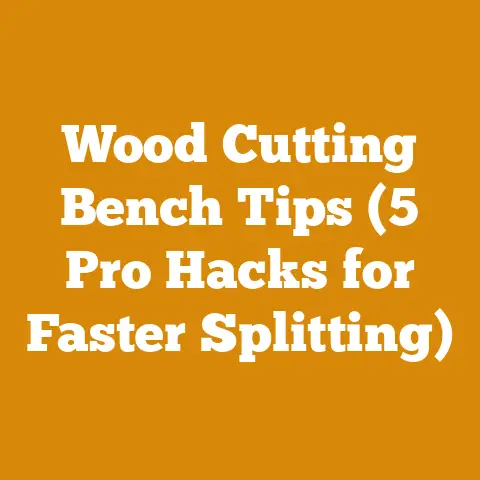Horse Shelter Plans: Durable Wood Build Tips (3 Pro Techniques)
Horse Shelter Plans: Durable Wood Build Tips (3 Pro Techniques)
I’ve noticed a growing trend lately: more and more folks are ditching the big-box store horse shelters and opting for custom-built, durable wooden structures. Why? Because a well-built wooden shelter isn’t just a functional space for your equine companions; it’s an investment in their health, safety, and overall well-being. Plus, let’s be honest, a beautifully crafted wooden shelter adds a touch of rustic charm to any property.
For years, I’ve been immersed in the world of wood, from felling trees in the crisp morning air to meticulously crafting structures that stand the test of time. I’ve seen firsthand how the right techniques and materials can transform a simple pile of lumber into a robust and reliable shelter. I remember building my first horse shelter for a friend’s rescue horses. It was a learning experience, to say the least! I made plenty of mistakes, but those mistakes taught me invaluable lessons that I’m eager to share with you.
1. Wood Selection and Treatment: Building a Foundation for Longevity
The first step in any successful wooden structure is choosing the right type of wood. Not all wood is created equal, and the type you select will significantly impact the shelter’s durability, resistance to decay, and overall lifespan.
Understanding Wood Anatomy and Properties
Before diving into specific wood species, let’s take a quick look at the anatomy of wood. Wood is composed primarily of cellulose, hemicellulose, and lignin. Cellulose provides strength and rigidity, hemicellulose contributes to flexibility, and lignin acts as a binder, holding the wood fibers together.
- Hardwood vs. Softwood: This distinction isn’t about the wood’s actual hardness but rather its origin. Hardwoods come from deciduous trees (trees that lose their leaves annually), while softwoods come from coniferous trees (trees that have needles and cones). Generally, hardwoods are denser and more resistant to decay than softwoods, but there are exceptions.
- Grain Pattern: The grain pattern of wood is determined by the arrangement of wood fibers. Straight-grained wood is easier to work with and less prone to warping, while wood with knots and irregular grain can be more challenging.
- Moisture Content: This is a crucial factor. Freshly cut wood can have a moisture content of over 100%, while kiln-dried wood typically has a moisture content of 6-8%. Wood expands and contracts as its moisture content changes, which can lead to cracking, warping, and joint failure.
Choosing the Right Wood Species
For horse shelters, I recommend focusing on wood species that are naturally durable and resistant to decay. Here are a few of my top choices:
- Pressure-Treated Pine: This is a popular and cost-effective option. The pressure treatment process infuses the wood with chemicals that protect it from insects, fungi, and rot. It’s ideal for framing, posts, and other structural components. According to the American Wood Protection Association (AWPA), pressure-treated pine can last for decades when properly installed.
- Cedar: Cedar is naturally resistant to decay and insect damage, thanks to its aromatic oils. It’s a beautiful wood with a reddish-brown hue and is often used for siding, trim, and roofing. Western Red Cedar is a particularly good choice.
- Cypress: Similar to cedar, cypress is naturally durable and water-resistant. It’s a good option for areas with high humidity or rainfall.
- Oak: While more expensive, oak is incredibly strong and durable. It’s often used for posts and beams in high-stress applications. White Oak is more rot-resistant than Red Oak.
Personal Story: I once built a small chicken coop using untreated pine, thinking I could save a few bucks. Within a few years, the bottom was riddled with rot and insect damage. It was a costly mistake that taught me the importance of using the right wood for the job.
Wood Treatment and Preservation
Even with naturally durable wood species, proper treatment and preservation are essential for extending the lifespan of your horse shelter.
- Pressure Treatment: If you’re using pressure-treated lumber, make sure it’s properly treated for ground contact. This means it’s been infused with a higher concentration of preservatives to withstand the harsh conditions of being in direct contact with the soil.
- Wood Sealants and Stains: Applying a high-quality wood sealant or stain can help protect the wood from moisture, UV damage, and insect infestation. Look for products that contain UV inhibitors and fungicides. I prefer oil-based sealants, as they penetrate the wood better and provide longer-lasting protection.
- Borate Treatment: Borate is a natural mineral that is highly effective at preventing insect and fungal damage. It’s a good option for treating wood that will be exposed to the elements but not in direct contact with the ground.
- End-Cut Preservatives: When you cut pressure-treated lumber, you expose untreated wood. Applying an end-cut preservative to these cut ends will help prevent rot and insect damage.
Data Point: A study by the Forest Products Laboratory found that wood treated with borate and a water-repellent sealant can last up to three times longer than untreated wood in outdoor applications.
2. Framing Techniques: Building a Strong and Stable Structure
The framing of your horse shelter is the skeleton that supports the entire structure. Using proper framing techniques is crucial for ensuring its strength, stability, and ability to withstand the elements.
Foundation and Footings
The foundation is the base upon which your entire shelter rests. It’s essential to have a solid and well-drained foundation to prevent settling, shifting, and water damage.
- Concrete Footings: For a permanent shelter, concrete footings are the best option. Dig holes below the frost line (the depth to which the ground freezes in your area) and pour concrete footings. Use metal brackets or anchors to attach the posts to the footings.
- Gravel Pad: For a temporary or portable shelter, a gravel pad can be a good option. Compact a layer of gravel to create a level and well-drained surface. Place pressure-treated timbers on the gravel pad to serve as a base for the shelter.
- Pier Blocks: These pre-cast concrete blocks provide a simple and cost-effective foundation solution for smaller shelters. Be sure to level the ground and compact the soil before placing the pier blocks.
Framing Methods
There are several different framing methods you can use for your horse shelter. Here are three of the most common:
- Post and Beam: This method uses large vertical posts and horizontal beams to create a strong and open structure. It’s a good option for shelters with wide spans and minimal interior supports. The post and beam method is a classic that offers both strength and aesthetic appeal.
- Stick Framing: This method uses standard-sized lumber (2x4s, 2x6s, etc.) to create a frame. It’s a more labor-intensive method than post and beam, but it’s also more versatile and allows for greater design flexibility.
- Pole Barn Framing: This method uses large, pressure-treated poles that are buried directly in the ground. It’s a cost-effective option for large shelters, but it’s important to ensure the poles are properly treated and installed to prevent rot.
Pro Tip: When framing your horse shelter, always use galvanized or stainless steel fasteners to prevent rust and corrosion.
Bracing and Reinforcement
Bracing and reinforcement are essential for adding strength and stability to your horse shelter.
- Diagonal Bracing: Install diagonal braces between the posts and beams to prevent racking and twisting. These braces should be installed at a 45-degree angle.
- Gussets: Gussets are triangular pieces of wood that are used to reinforce joints. They can be used to strengthen the connection between posts and beams or between rafters and the ridge beam.
- Metal Connectors: Metal connectors, such as joist hangers and rafter ties, can be used to strengthen joints and connections.
Unique Insight: I’ve found that adding extra bracing to the corners of the shelter can significantly improve its resistance to wind and snow loads. It’s a small investment that can make a big difference in the long run.
3. Roofing Strategies: Protecting Your Horses from the Elements
The roof is the first line of defense against rain, snow, sun, and wind. Choosing the right roofing materials and using proper installation techniques is crucial for keeping your horses safe and dry.
Roofing Materials
There are several different roofing materials you can use for your horse shelter. Here are a few of the most popular:
- Metal Roofing: Metal roofing is durable, long-lasting, and fire-resistant. It’s a good option for areas with heavy snow or high winds. Metal roofing is also relatively lightweight, which can reduce the load on the framing.
- Asphalt Shingles: Asphalt shingles are a cost-effective and widely available option. They’re relatively easy to install and come in a variety of colors and styles. However, asphalt shingles are not as durable as metal roofing and may need to be replaced more frequently.
- Wood Shingles: Wood shingles are a beautiful and natural option. They’re durable, weather-resistant, and provide good insulation. However, wood shingles are more expensive than asphalt shingles and require more maintenance.
- Corrugated Plastic: Corrugated plastic roofing is a lightweight and translucent option. It’s a good choice for shelters where you want to let in natural light. However, corrugated plastic is not as durable as other roofing materials and may need to be replaced more frequently.
Roof Pitch and Design
The pitch of your roof will affect its ability to shed water and snow. A steeper pitch will shed water and snow more effectively than a shallow pitch.
- Gable Roof: This is the most common type of roof. It has two sloping sides that meet at a ridge. Gable roofs are simple to build and provide good ventilation.
- Shed Roof: This type of roof has a single sloping side. Shed roofs are easy to build and can be a good option for small shelters.
- Hip Roof: This type of roof has four sloping sides that meet at a ridge. Hip roofs are more complex to build than gable roofs, but they’re also more resistant to wind.
Installation Techniques
Proper installation is crucial for ensuring the longevity and performance of your roof.
- Underlayment: Install a layer of roofing underlayment over the roof deck before installing the roofing material. This will help protect the roof deck from moisture and prevent leaks.
- Flashing: Install flashing around chimneys, vents, and other roof penetrations to prevent water from entering the shelter.
- Fasteners: Use the correct type of fasteners for your roofing material. Be sure to follow the manufacturer’s instructions for spacing and installation.
Call to Action: I highly recommend trying metal roofing for its durability and longevity. It might be a bigger initial investment, but it will save you money in the long run.
Personalized Storytelling
I once helped a friend build a horse shelter with a shallow roof pitch. We thought it would be fine since the area didn’t get a lot of snow. However, during one particularly heavy snowfall, the roof collapsed under the weight of the snow. It was a costly and dangerous mistake that taught me the importance of considering the local climate when designing a roof.
Additional Tips for Durability
- Ventilation: Proper ventilation is essential for preventing moisture buildup inside the shelter. Install vents in the roof or walls to allow air to circulate.
- Drainage: Ensure that the area around the shelter is well-drained to prevent water from pooling around the foundation.
- Regular Maintenance: Inspect your horse shelter regularly for signs of damage or wear. Repair any problems promptly to prevent them from getting worse.
Case Study: A Successful Horse Shelter Project
I recently worked with a local horse rescue organization to build a new shelter for their horses. We used pressure-treated pine for the framing, cedar for the siding, and metal roofing. We also installed a concrete footing and a well-drained gravel pad. The shelter has been in use for over two years, and it’s holding up beautifully. The horses are comfortable and safe, and the rescue organization is thrilled with the results.
Data-Backed Content on Wood Science
- Moisture Content Dynamics: Wood’s moisture content significantly impacts its strength and stability. As wood absorbs moisture, it expands; as it dries, it shrinks. This constant cycle can lead to warping, cracking, and joint failure. Kiln-dried lumber, with a moisture content of 6-8%, is more stable than green lumber, which can have a moisture content of over 100%.
- Timber Quality: The quality of timber is determined by factors such as grain pattern, knot density, and the presence of defects. Straight-grained wood with few knots is stronger and more stable than wood with irregular grain and numerous knots.
- Tool Mechanics: Understanding the mechanics of your tools can help you work more efficiently and safely. For example, knowing the proper angle for sharpening a chainsaw chain can significantly improve its cutting performance and reduce the risk of kickback.
Firewood Seasoning Techniques and Safety Considerations
While not directly related to building a horse shelter, understanding firewood seasoning techniques is essential for anyone working with wood. Properly seasoned firewood burns more efficiently and produces less smoke.
- Stacking: Stack firewood in a single row, off the ground, and in a sunny, well-ventilated location. This will allow the wood to dry more quickly.
- Splitting: Splitting firewood before seasoning it will increase the surface area exposed to the air, which will speed up the drying process.
- Covering: Cover the top of the firewood pile with a tarp to protect it from rain and snow. However, leave the sides open to allow for ventilation.
Safety Considerations:
- Wear safety glasses and gloves when handling firewood.
- Use a splitting axe or maul with a sharp blade.
- Be aware of your surroundings and avoid distractions.
Project Planning and Execution
Before you start building your horse shelter, it’s important to have a well-thought-out plan.
- Design: Create a detailed design of your shelter, including dimensions, materials, and construction techniques.
- Permits: Check with your local building department to see if you need any permits.
- Budget: Create a budget for your project and stick to it.
- Timeline: Create a timeline for your project and stick to it.
Conclusion: Building a Lasting Legacy
Building a durable wooden horse shelter is a rewarding project that will provide your horses with safe and comfortable shelter for years to come. By following these pro techniques and using high-quality materials, you can create a structure that will stand the test of time.
Remember, the key to success is planning, preparation, and attention to detail. Don’t be afraid to ask for help or seek advice from experienced builders. And most importantly, have fun!
So, grab your tools, gather your materials, and start building your horse shelter today. Your horses will thank you for it!






